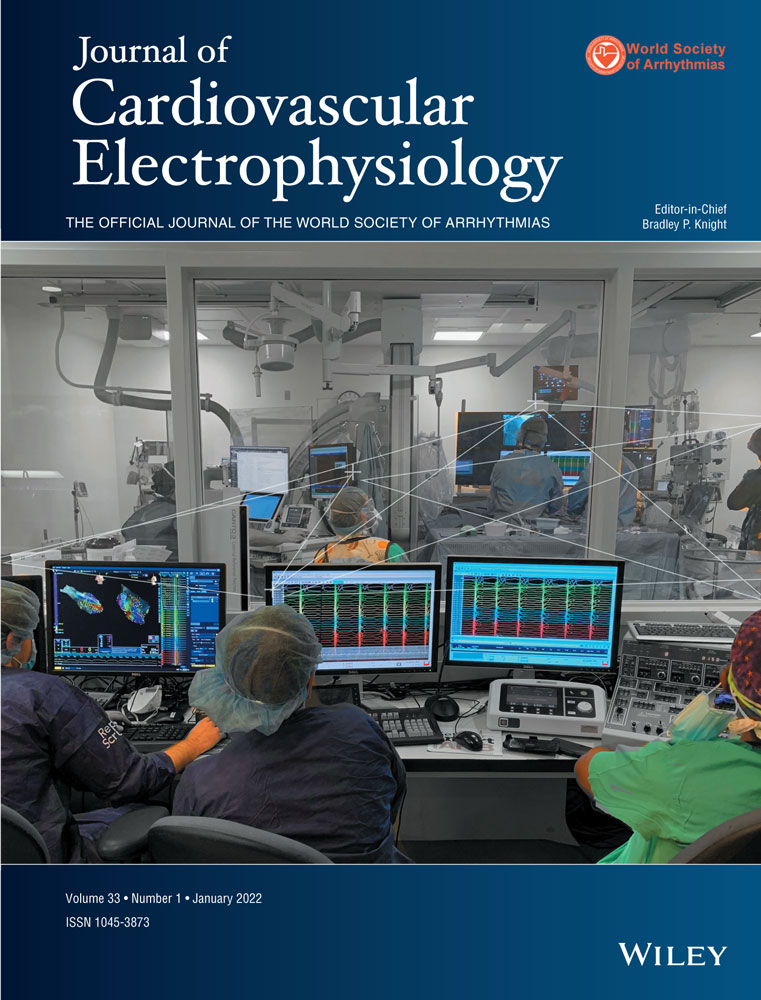Actual tissue temperature during ablation index-guided high-power short-duration ablation versus standard ablation: Implications in terms of the efficacy and safety of atrial fibrillation ablation
Abstract
Background
Actual in vivo tissue temperatures and the safety profile during high-power short-duration (HPSD) ablation of atrial fibrillation have not been clarified.
Methods
We conducted an animal study in which, after a right thoracotomy, we implanted 6–8 thermocouples epicardially in the superior vena cava, right pulmonary vein, and esophagus close to the inferior vena cava. We recorded tissue temperatures during a 50 W-HPSD ablation and 30 W-standard ablation targeting an ablation index (AI) of 400 (5–15 g contact force).
Results
Maximum tissue temperatures reached with HSPD ablation were significantly higher than that reached with standard ablation (62.7 ± 12.5 vs. 52.7 ± 11.4°C, p = 0.033) and correlated inversely with the distance between the catheter tip and thermocouple, regardless of the power settings (HPSD: r = −0.71; standard: r = −0.64). Achievement of lethal temperatures (≥50°C) was within 7.6 ± 3.6 and 12.1 ± 4.1 s after HPSD and standard ablation, respectively (p = 0.003), and was best predicted at cutoff points of 5.2 and 4.4 mm, respectively. All HPSD ablation lesions were transmural, but 19.2% of the standard ablation lesions were not (p = 0.011). There was no difference between HPSD and standard ablation regarding the esophageal injury rate (30% vs. 33.3%, p > 0.99), with the injury appearing to be related to the short distance from the catheter tip.
Conclusions
Actual tissue temperatures reached with AI-guided HPSD ablation appeared to be higher with a greater distance between the catheter tip and target tissue than those with standard ablation. HPSD ablation for <7 s may help prevent collateral tissue injury when ablating within a close distance.
CONFLICT OF INTERESTS
Dr. Okumura is a professor in an endowed department supported by Boston Scientific Japan, Abbott Medical Japan, Japan Lifeline, Medtronic Japan, and Nihon Kohden.




